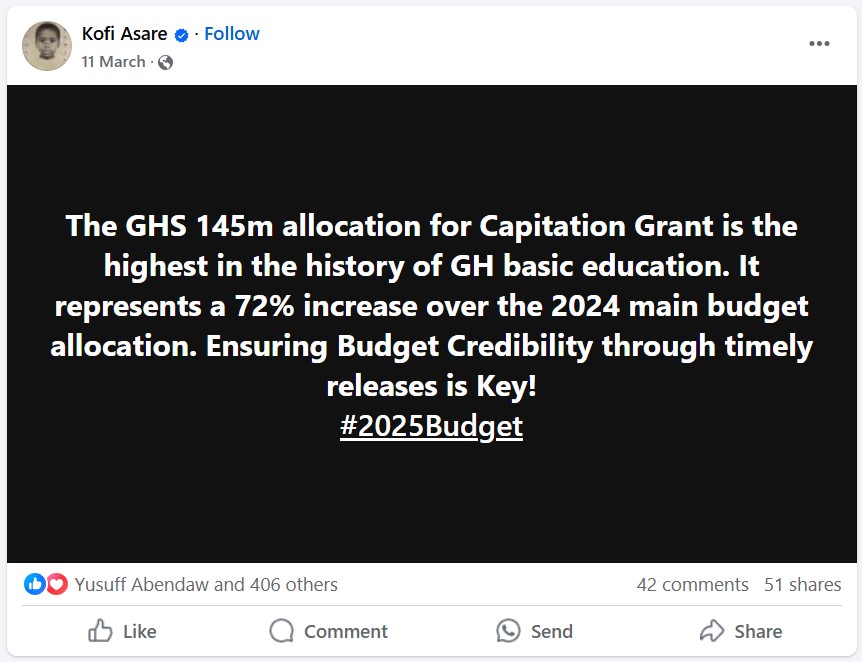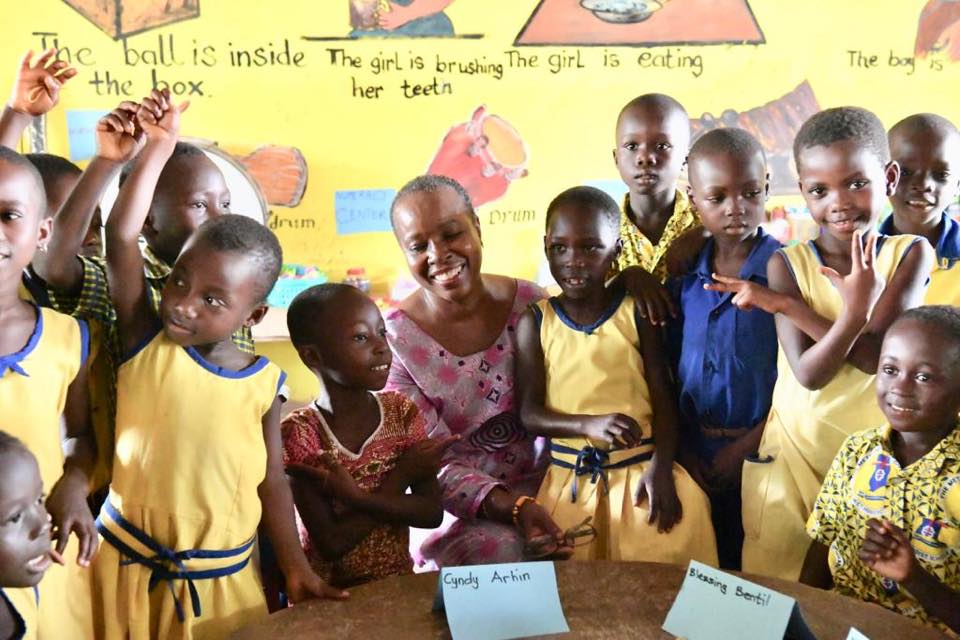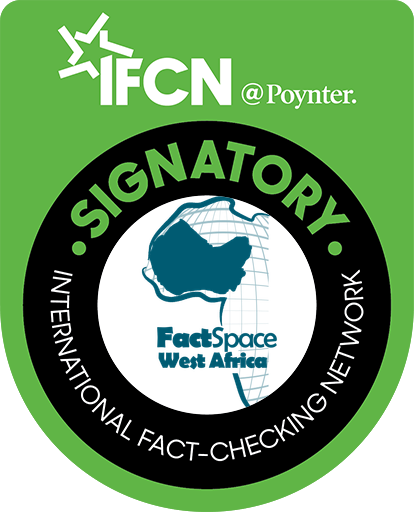Claim: GH¢145 million allocation for Capitation Grant is the highest in the history of basic education
Source: Kofi Asare (Africa Education Watch)
Verdict: True
Researched by Gifty Danso
The Executive Director of Africa Education Watch, Mr. Kofi Asare, claims the John Dramani Mahama administration’s allocation of GH¢145 million to the Capitation Grant is the highest in the history of basic education.
In a post on X, shortly after the presentation of the 2025 budget on March 11, 2025, Mr. Asare said: “The GHS 145m allocation for Capitation Grant is the highest in the history of basic education. It represents a 72% increase over the 2024 main budget allocation. Ensuring Budget Credibility through timely releases is Key!”

This fact-check will verify the authenticity of the allocation being the highest ever.
What is the Capitation Grant?
In September 2004, the Government of Ghana (GoG) introduced the Capitation Grant – a fee-abolition policy for public basic schools.
It was meant to address challenges with school enrollment and spur the attainment of universal access to basic education goals under the Ghana Growth and Poverty Reduction Strategy (GPRS II) and to help Ghana meet its Millennium Development Goal (MDG) targets (2 and 3).
The following year, authorities began a nationwide rollout to cover all public basic schools within the country.
GhanaFact contacted Mr. Kofi Asare for further comments on his claims, and he said;
“The highest allocation to the Capitation Grant in the past 10 years was GH¢84 million; that was last year. And then for the first time, we are seeing GH¢145 million going into the Capitation Grant. The Capitation Grant was only fully funded first in last year. But this year, the 140 or so (million cedis) is more than the Capitation Grant amount for the year. It appears that they are paying the actual amount and paying the backlog because it’s in arrears of 2 years.”
Fact-Check
In verifying this claim, GhanaFact relied on allocations announced in the national budgets since 2005.
According to a GoG document published by UNESCO detailing a 10-year education plan, the Capitation Grant policy targeted schools in 40 deprived districts in 2004. However, the total number of districts that benefited from the pilot later reached 53, after the creation of new districts, according to the 2005 budget statement. (page 151.)
The document detailed the following;
“All levies were banned, which would prevent any student from going to school. In 2005, the capitation grants were extended to all public basic schools (KG, Primary and Junior Secondary Schools) across Ghana. Enrolment grew significantly in the deprived districts between 2003/04 and 2004/05 – from 76% to 80.1%.
“The introduction of the Capitation Grant is believed to have been a significant contributor to this growth, and with the nationwide introduction of the scheme to all public schools enrolment has increased from 87.5% in 2004/2005 to 92.1% in 2005/2006,” (find at page 10 of the 10-year work plan for education in Ghana).
Successive governments have indicated funding commitments to cover the capitation grant policy in subsequent national budgets. These provisions date back to the 2005 budget presentation, which had 95 billion old cedis, equivalent to GH¢950,000, allocated for the policy.
In 2009, the grant allocation was increased from GH¢3 to GH¢4.50 per child rising to GH¢9.00 in 2017 (see page 102).
GhanaFact noted that allocations have continued to increase since nationwide rollout in 2005. Between 2017 and 2023, allocations increased, although the budget presentations do not always explicitly state how much was allocated yearly.
For instance, the budget statements for 2017, 2018, 2019, 2020, 2021, 2022, and 2023 do not include the total amount allocated.
The 2017 budget notes that GH¢25.03 million was allocated as Capitation Grant in 2016 (see page 133 of the budget statement).
In 2018, the budget indicated that a projected number of 6,371,975 pupils were expected to benefit from the Capitation Grant, although clear monetary allocations were not stated. The government also announced the extension of the policy to cover all Public Special Schools (see pages 112 and 115 of the 2018 budget statement).
The 2024 and 2025 budgets pegged the allocations at GH¢84 million and GH¢145.5 million, respectively (see pages 182 and 72 of the budget statements), indicating the 2025 allocation represents a 73.2% increase over the previous year’s allocation.
Verdict
Therefore, the claim is rated true.
Featured image: UNICEF Ghana photo



